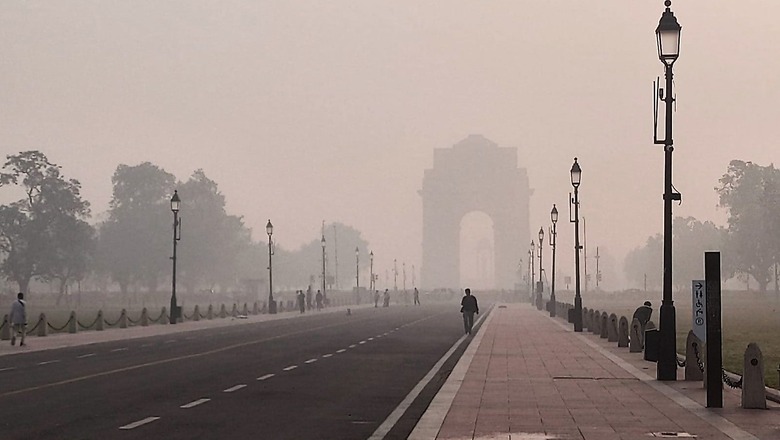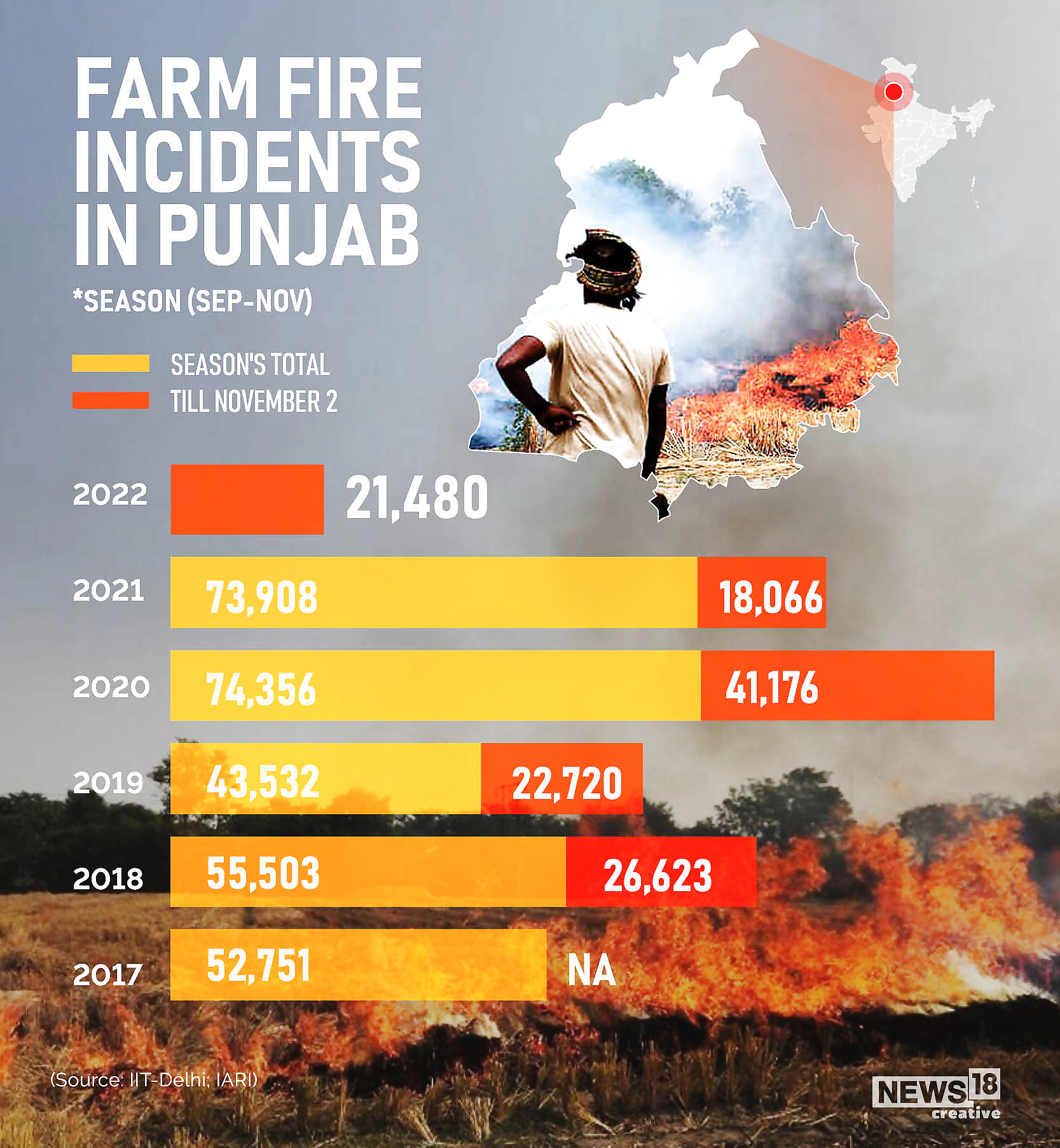
views
With a large area under paddy cultivation in Punjab yet to be harvested, the state hit the season’s highest number of farm fire incidents in a 24-hour period — 3,634 —on Wednesday. While Delhi currently has a silver lining in terms of moderate local winds, which are dispersing pollutants to some extent, air quality may worsen to ‘severe’ again with peak burning incidents yet to take place and transport-level winds set to blow from the Northwest, bringing in plumes of smoke to the capital.
This was the first time this season that the number of farm fires in a day went up to 3,634 in the state, almost double from the 1,842 recorded on Tuesday.
The paddy straw burning incidents in Punjab are going to see a spike over the coming days, said central government officials monitoring the situation, explaining that a large number of paddy fields are yet to be cleared for the next crop.
A report prepared by the Indian Agriculture Research and Institute (IARI) on the paddy area under cultivation and that which is burnt upon harvest stated that till October 24 this year, about 38.74 per cent of the sown area was harvested and 25.63 per cent of the harvested area was burnt in Punjab. This year, paddy was sown in 3028.52’000 ha area in the state.
The number of incidents till date (November 2) this year — 21,480 — have surpassed those of last year during the corresponding period — 18,066. However, for the same period, 2020 (the year when the pandemic broke out) saw the highest farm fire incidents at 41,176. The year 2019 saw 22,720 cases, 2018 saw 26,623, while data was not available for 2017, as per IARI.
Last year, the stubble burning season — which starts with the harvest of kharif crop around mid-September and lasts till November-end — saw a total of 73,908 incidents while 2020 saw 74,356. In 2019, the total number of farm fires recorded was 43,532; in 2018, it was 55,503; while in 2017 it was 52,751.

Every November, the first fortnight is when Delhi sees the highest spike in pollution levels, which includes intense smog episodes, an analysis by the Delhi environment department last year had stated.
This is a toxic mix of smoke from crop stubble burning and local pollutants being trapped under stable weather conditions, which do not allow dispersion, leading to a spike that triggers an annual public health emergency.
The early warning system for weather and air quality forecasting of the Union Ministry of Earth Sciences (MoES) has forecast return of North-westerly winds back to Delhi-NCR, which will again carry the pollutant load from the raging farm fires in Punjab. This can push the air quality back to ‘severe’ zone.
On Wednesday, as per the Central Pollution Control Board’s (CPCB) 4pm bulletin, Delhi’s average AQI was 376 (higher end of very poor). By 12am, it had spiked to 397. The AQI on Tuesday had slipped to 423 in the ‘severe’ zone for the first time this season and improved slightly to ‘very poor’ on Wednesday morning owing to local surface winds blowing across the city.
Read all the Latest India News here




















Comments
0 comment